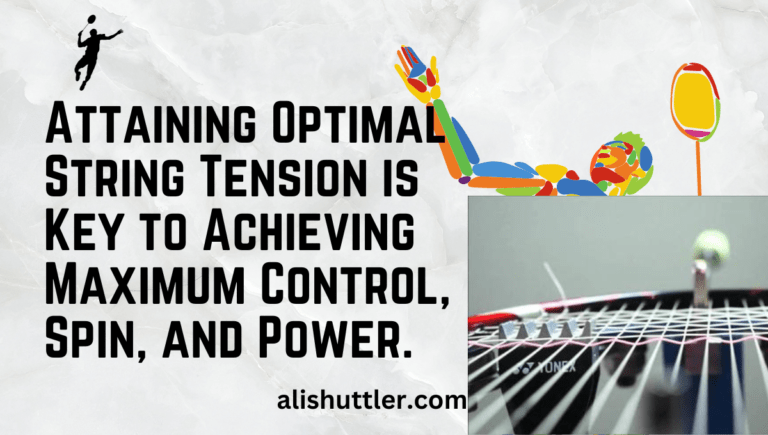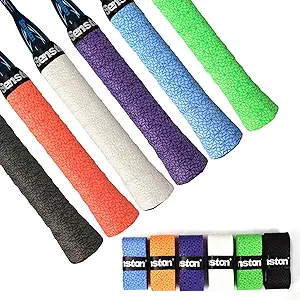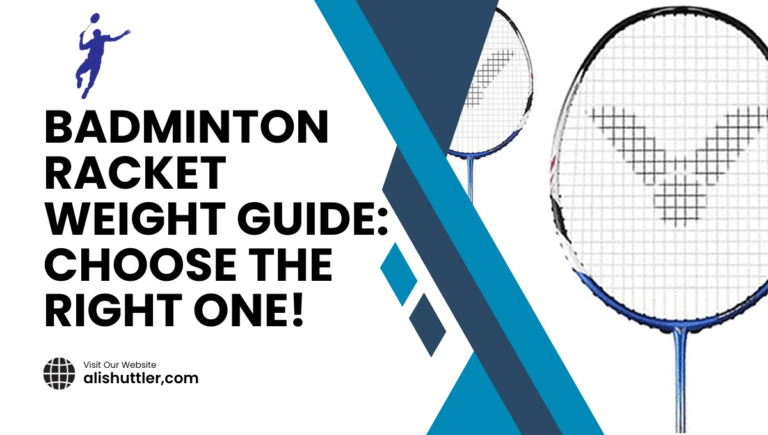Backhand badminton mastery means having the skill to hit strong and sharp shots with the back of your racket hand. Ideally, players should use the backhand when they need to make a quick return—such as a drop shot—or when the shuttlecock touches down on their non-dominant side.
Proper backhand form enables you to sustain longer rallies and allows you to shift your body easily without straining your arm and wrist. In Los Angeles, badminton clubs and community gyms are thriving. Learning the backhand allows players to stand out in pick-up games and community leagues.
To develop strong backhand fundamentals, players focus on grip, footwork, and timing. This is your ultimate guide to backhand badminton mastery with simple steps and easy strategies to increase your accuracy and power. Whatever your starting point, progress doesn’t have to be elusive!
What Is A Badminton Backhand?
A badminton backhand is a core shot that shapes how a player handles rallies, defends the rear court, and keeps the game balanced. This stroke tests a player’s artistry, more so when their backs are against the wall. That’s because it involves hitting with the back of your hand towards the shuttle.
Nothing will make you a more obvious target for opponents than having a weak backhand. Players who are good at this shot like Lee Zii Jia and Yuta Watanabe excel in both singles and doubles. They masterfully dictate the speed and flow of the match.
Defining the Backhand Stroke
A proper backhand stroke begins with the correct grip, usually the thumb grip, and features a compact backswing. The wrist should snap at contact, which will add a lot of speed and control to the shot. The wrist action adds a lot of power to the shot.
This makes it possible for players to transition seamlessly from a basic drop shot to a quick drive. Body position is important as well. The player has to be low, knees bent, and transfer weight from the back foot to the front. This allows for better balance and makes the shot more sustainable moving forward.
Backhand vs. Forehand: Key Differences
The grip used for a backhand differs from a forehand. For forehands, the most effective grip is the “handshake grip.” For backhands, the thumb should run down the length of the handle.
The swing path is altered as well. Backhand swings employ a shorter, more compact swing, whereas forehands allow players to open up more. Because of the nature of the stroke, the backhand is ideal for playing tight drops or defensive lifts.
In contrast, forehands are often the source for hard smashes and clears.
Why Beginners Often Struggle
Why Grip, Timing, and Stance is a Challenge for Beginners. Habits such as a weak grip or being too upright can hinder progress. Muscle memory is incredibly important.
Going through these motions repeatedly will help you gain confidence and become better at it. Most beginners will take the approach of learning just one basic backhand, likely a drop shot, before moving on to others.
Other players go as far as using two rackets or just work more on footwork to compensate for having a poor backhand.
Nailing the Backhand Fundamentals
Teaching an effective backhand in badminton begins with a strong understanding of fundamentals. It’s a common temptation for many players to want to leapfrog these steps, but the truth is that meaningful progress only comes through consistent, incremental effort.
Getting the backhand right requires a proper grip, stance and footwork—all dialed in for control and power. The proper fundamentals from the start equal better development and less reprogramming of negative habits down the road.
Choosing Your Backhand Grip
Grip choice determines the success of each backhand stroke. For more power in lifts and drives, the thumb grip—with the thumb pressing against the wider bevel—provides greater thrust.
The grip you’ll use for 90% of your shots is the basic backhand grip. The grip you’ll use for flicks and more aggressive changes is the bevel grip. Maintain a loose grip and you’ll find your power and accuracy come much easier.
When faced with complicated spins, teams must be able to quickly adjust grips to counter fast changes. Watching pros like Lee Chong Wei, who moves his grip in small, smooth ways, shows how grip makes a big difference.
Perfecting Your Ready Stance
To prepare for backhand strokes, squat and maintain a shoulder-width stance. As always, ensure your weight is on the balls of your feet for best balance and quickness.
This stance lets players move fast and stay balanced, especially when reaching for shots between the doubles service line and two feet from the net—the ideal hitting zone. Stable balance allows players to be quick on their toes, regaining after every shot and not allowing themselves to be surprised.
Essential Footwork Patterns
Fast, pretty footwork supports every great backhand. Side shuffles, split steps, and lunge steps are important for incorporating speed and reach.
Agility drills, whether they’re ladder drills or shadow badminton, develop the muscle memory that makes you look fast. Staying quick on the feet lets players take the shuttle higher and earlier, keeping control and adding shot variation, like switching between round-the-head and backhand strokes.
Mastering Backhand Techniques Step-by-Step

Mastering backhand techniques is a learning experience that develops with every match, practice, and strategic fine-tuning. Breaking this skill down into clear steps helps players of all levels build a strong foundation while making steady progress.
Focusing on one technique at a time and checking in on progress often lets each improvement become part of a player’s routine. A step-by-step process turns the complex skills of a well-developed backhand into an achievable goal. It makes mastering your serves, smashes, and defensive returns seem more doable.
1. Understanding Swing Mechanics
Ultimately, the backhand swing in badminton involves a few moving parts that you need to have working in concert. Your swing starts with your grip. When you grip the paddle with a backhand grip—your thumb flat against the wider part of the handle—you have greater control and strength.
Setting up for the shot, the stance is just as important here too; feet should be shoulder-width apart with bent knees and weight balanced. The technique demands you stay loose in the shoulder and wrist. A majority of the movement is generated through a fluid arm follow-through paired with a fast snap of the wrist.
Timing and rhythm are critical components of the swing. Using the backhand with the shuttle at the optimal height, in front of the body, gives you more control, power, and precision. A rushed swing or a delayed one results in mishits or defensive shots.
To develop mechanics for other shots, modify the mechanics slightly. Consider using a compact swing for net shots and an extended follow-through for clears. Studying matches and slow-motion replays provides great insight into how elite-level players modify their swing in various game situations.
2. Generating Effortless Power
Power in the backhand shot isn’t about swinging harder. It’s not about whipping the arm around; it’s about using the entire body. Pros make it look easy because they start with a solid foundation.
They simply rotate their hips and shoulders into the shot, creating the energy to flow up through their arm and into their wrist. The wrist snap follow-through at the end of the swing is what gives an extra kick of speed to the shuttle.
This is where relaxation comes into play. Tightening up creates unnecessary tension and drains energy while slowing the swing down. An easy grip and supple arm muscles allow power to flow fluidly through our bodies.
By practicing slow-motion swings that prioritize remaining relaxed, the body is conditioned to make the optimal movement. With repetition, this method trains muscle memory, so that producing powerful shots comes naturally and consistently.
3. Achieving Pinpoint Shot Accuracy
Accuracy in backhand play begins with laser-like attention to the shuttle as well as your target zone. Always follow through by keeping your eyes on the shuttle until it hits. By choosing an exact location on the court to aim for, you will hit your target more often.
Focus on the follow-through to prevent as many last-minute adjustments as possible from being made that would mess the shot up. Focused practice drills can build precision and accuracy.
During practice, place targets in the corners of the opposite court to further increase shot precision. Set up cones to define target zones and make shot accuracy a competitive challenge! Practicing these exercises in repetition will create muscle memory.
After a period of time, players begin to feel their shots landing more accurately towards the target area they are focusing on, during both match play and practice.
4. Executing Powerful Backhand Smashes
Although a backhand smash in badminton is difficult, it can be one of your greatest weapons. The main features of a powerful backhand are a strong grip, an early backing, and a fast wrist flick.
With the body turned sideways to the net, weight distributed on the back foot, a strong foundation is created. If you time the hit properly, you’ll be able to meet the shuttlecock right above and in front of your body. This will help the shuttle to go down fast.
A strong smash hit comes down to body positioning and the speed in which a player can go from a ready position to an offensive play. Being smart about where you aim your shots—hitting towards the opponent’s backhand side or going deep into the corners—will create a more challenging return.
If you watch any tournament matches, you’ll notice the best players using the backhand smash as a way to get out of a defensive position.
5. Placing Shots with Footwork
Footwork is the unsung hero of badminton backhand technique mastery. Effective footwork allows a player to move into the optimal position to strike accurate, well-timed shots. It begins with short, swift steps that maintain an athletic stance of balance and readiness to go in all directions, enhancing their backhand skills.
Being properly positioned places you behind the shuttle, allowing the player to utilize full arm extension, giving them greater reach and control. Exercises such as shadow badminton—performing the movements without a shuttlecock—or sprint agility ladder drills increase quickness and improve shot placement.
These drills develop players’ balance and body control to enable them to better control and place shots on purpose, significantly enhancing their overall gameplay and backhand ability.
6. Preparing for the Next Shot
In terms of recovery after a backhand shot, recovery simply means returning to a neutral stance as quickly as possible. This short shimmy puts the players into position for the next action.
Keeping the knees bent and staying light on the toes prepares you for quick changes of direction. Anticipating the opponent’s most likely return shot makes this step even more complex.
Paying attention to their racket angle and body position shows the way. Timing the split-step—bouncing up and down in place just as the opponent strikes the ball—quickens reaction time and allows for speedy movements from shot to shot.
7. Exploring Backhand Shot Variations
There are several types of backhand shots: the backhand clear, drop, and serve are most common. The backhand serve, in singles and doubles, is a classic. To start, hold the shuttle by the feather end.
Angle your body to the player and extend an effortless backhand grip to produce a crisp serve. Similar to the backhand, there are two serve variations—short and flick—with specific tactical uses.
Changing up backhand shot variations makes it harder for your opponent to predict your next move. Using a drop shot when the opponent hangs back, or a flick serve when they lean in, shifts the flow of play.
Seeing pros interchange clears, drops, and drives provides practical visual demonstrations of tactical diversity.
8. Adapting Technique for Defense
Defensive backhand play requires quick decisions and faster hands. Grip tighter for a more solid grip. Maintain the racket head high and employ a compact swing to stay prepared to properly block tough shots.
Lightning-fast reflexes and rock-solid footwork are essentials. Having a strong base by staying centered in the court provides better reach and flexibility for unexpected attacks.
Focusing on quick reactions and going through the wall to train rebound skills are great ways to practice defense. Against powerful smashes, respond with a gentle return shot or a precision clear.
This tactic not only resets the rally but gives the defender time to recover.
9. Adapting Technique for Attack
Increasing the aggression and confidence of attacks with the backhand usually requires a more pronounced swing, a more pronounced wrist flick, and riskier shot decisions. Stepping into the shot, as opposed to staying back, shows your opponent you plan to attack.
A backhand drive is an effective way to hit the shuttle down low and hard. Or, execute an unexpected cross-court backhand smash to leave your opponent on their heels.
Regular practice develops the confidence to employ these shots in match play, instead of just the practice court.
Smart Training Drills for Improvement

As a result, specific training drills became the foundation for true improvement in backhand badminton. When drills are logical and organized, they allow players to develop muscle memory and hone their craft. Changing up your rigmarole helps keep it fresh and exciting.
It forces players to work on a variety of skills, keeping them from becoming one-dimensional.
Focused Drills for Consistency
- Backhand stroke repetition: Hit 50 consecutive backhands across the court.
- Shadow backhand: Mimic the motion without a shuttlecock to focus on form.
- Progression drill: Start with a standing backhand, then add one step before hitting, then two, up to four steps, finishing with a net shot.
- Kneeling backhand practice: Hit shots while on the knees to work on wrist and upper body control.
- Shuttle feed: Have a partner feed shuttles to practice placement. Focus on tracking how many times in a row your players can make clean hits and you will notice improvement in overall control.
Footwork Agility Exercises
- Ladder drills: Quick feet in and out of a ladder.
- Side shuffles: Move side-to-side across the court.
- Cone zig-zags: Sprint between cones, changing direction fast.
- Jump-and-recover: Hop forward, then recover to base. Better footwork means players can get to the shuttle quicker and be in position to hit a solid backhand. Incorporate these drills at the beginning or end of practice for maximum effectiveness.
Wall Practice Routines
- One-handed backhand shots against a wall.
- Quick rally: Keep the shuttle close and low.
- Practice—Get in the Drill Alternate forehand and backhand shots.
Wall practice helps improve shot accuracy and follow through, incorporating different grip types and footwork drills to enhance backhand skills and shot placement.
Partner Drills for Realism
- Backhand-only rallies.
- Feed-and-respond: One player feeds, the other returns with backhand.
- Match simulation: Play points using only backhand for returns.
Partners provide invaluable feedback during practice sessions, allowing for equitable development of backhand skills.
Using Tech for Analysis
Technology to aid analysis Video analysis apps are a great way to identify mistakes in form or timing. Technology such as slow-motion replay or swing trackers can help determine when there is too much arm or not enough wrist.
Reviewing footage builds awareness and speeds up self-improvement.
Building a Solid Practice Routine

Creating a solid backhand practice routine A solid practice routine is the foundation of badminton backhand success. Elite players spend dozens of hours honing their specialty shots. This targeted practice leads to greater precision, faster tempo, and more accurate identification.
It’s better to have more consistent practice—even in smaller chunks—because this type of practice builds muscle memory. Consistency, patience, repetition A consistent, long-term process leads to deepening accuracy, power and confidence. In fact, research has shown that deliberate practice can increase performance by as much as 30%.
Combining technical drills, physical training, and mental prep makes sure that you don’t neglect this important trifecta.
Structuring Your Training Sessions
Key session elements:
- Warm-up stretches and light footwork
- Shadow backhand drills
- Skill isolation (grip, swing, follow-through)
- Game-like scenarios
- Physical conditioning
- Mental prep (visualization)
- Cool-down and stretching
Warm-ups are critical in preventing injury and increasing your range of motion. Cool-downs allow for more effective recovery. Don’t forget your stretching drills.
Shadow backhand practice. No shuttle, no problem! Shadow practice helps you concentrate on movement without a shuttlecock to worry about, creating an opportunity to drill the form. Controlling session intensity—beginning with a slow pace, gradually increasing, and then tapering—maintains the interest of players while preventing burnout.
Setting Realistic Goals
Having clear and realistic goals for each session helps maintain focus during practice. Short-term goals, such as executing 8 out of 10 backhands in a specific target area, create low-hanging fruit. Long-term goals, like being able to execute a backhand clear in a match setting, provide a path for continued development.
Tracking goals increases motivation and makes it easier to understand the level of commitment.
Tracking Progress: Your Mastery Chart
Metrics to track:
- Shot accuracy
- Power and distance
- Consistency under pressure
- Footwork efficiency
- Recovery time after each drill
Self-assessment spots weak areas. A mastery chart lets you see gains at a glance, making progress feel real and helping you stay motivated.
Developing Your Backhand Strategy

Building a solid backhand in badminton is more than just hitting the shuttle. An intelligent player understands when, where, and how to deploy the backhand for maximum effect. Having a clear strategy will make all the difference!
Through zone targeting, shuttle awareness and shot selection, a player can develop a strategic advantage over their opponent. Through combining the art of execution with the science of astute analysis, athletes begin to recognize and find the backhand’s most ideal opportunities.
When to Use the Backhand
A backhand drive shines in specific spots on the court when the shuttle comes quick to your non-racket side or lands deep in the rear corner. While not every shot should be a backhand, understanding your playing style helps determine when to use it. In those scenarios, a round-the-head shot is usually the optimal shot option.
When you want to keep the pressure on or catch your opponent off guard, studying match play expands your vision to identify these opportunities. If your opponent has determined that your backhand is your weak side, don’t give them the satisfaction of knowing what you’ll do next.
Mix in a backhand clear with a flat drive to develop some fresh angles and improve your backhand skills.
Integrating Backhand into Game Plan
Integrating backhand shots into your overall game plan requires focused consideration. That is the recipe for success, blending forehand and backhand, but never going all in on either side.
Observe the pros – watch players such as Lee Chong Wei. His casual, fluid stroke gives him time to change directions while still keeping opponents off guard. Focus on fundamental skills first, such as the backhand lift and drive.
After that, move on to deeper and more angled strokes to develop your power. Practicing with a feeder, who stands a few feet behind the service line, allows you to work on shot control and muscle memory.
Reading Your Opponent’s Moves
Effective backhand implementation relies on being able to read your opponent’s position and patterns. Pay attention to how they line up shots and what corners or holes they prefer to shoot for.
Pay attention to the subtle changes in the shuttle’s trajectory. This will give you time to set up your backhand or go to a round-the-head stroke. Observation opens you up to better counter-strategies, such as changing your grip or shot speed to counter what you see.
The Mental Game of Backhand

Badminton backhand shots are very much a mental game. The mental game has a huge impact on how players perform, particularly in high-pressure situations. Having faith in your technique is everything. When you’ve mastered the reps, making every shot is an easy pleasure.
You can release any errors you made and focus on what lies ahead. A strong mental game ensures players are prepared to deal with the pressures of the game, maintain composure, and make quick adjustments.
Building Confidence in Your Shot
Building confidence in your backhand takes more than just repeating the effort. Small mental habits, such as visualizing successful shots after the fact, can have a massive impact on performance. Research has demonstrated that mental visualization can increase performance by as much as 15%.
It’s something that players on clubs from Los Angeles to Detroit have employed, shutting their eyes and visualizing the shuttle hitting just so. Perhaps most importantly, celebrate those small wins, whether it’s a clean return or a nicely executed drop, to reinforce that self-confidence.
In the long run, those moments compound, cementing your backhand as an integral piece of your toolkit.
Staying Focused Under Pressure
It’s hard to stay sharp when the match gets serious, especially when considering different playing styles. Taking deep and controlled breaths is a tried-and-true method for calming nerves. Almost all professional players have a split second in their rhythm prior to serving where they pause, reset, and catch their breath, which is essential for maintaining proper body positioning.
In this case, distractions from the crowd or an opponent’s strategy can disrupt your timing. It’s critical to focus on the task at hand—whether that be shot placement or the trajectory of the shuttle—to shut out the distractions and execute your shot routine effectively.
Others feel like changing grips on the fly takes more mental energy when under pressure, so they practice their grip technique until it becomes second nature, allowing for smoother transitions and improved backhand skills.
Making Quick Decisions
Backhand shots require a very quick decision. That’s why decisiveness is so important. Experienced players work on their reflex time, creating practice scenarios where shuttles are shot quickly and at unpredictable angles.
In the league or tournament, a drop shot or a clear could be the point won or lost. To conceal their intentions, players must rapidly read their opponent’s footwork and racquet face.
This gives them the freedom to choose their shots without second guessing themselves. That ability to think on one’s feet makes a felt disadvantage into an underappreciated advantage.
Avoiding Common Backhand Mistakes

Most players face common backhand mistakes, which can limit their overall performance on the badminton court. Poor timing, hurried strokes, and tension in the hand from excessive grip pressure can all lead to shots that lack pop and are off the mark. When our footwork is bad, it becomes increasingly difficult to get behind the shuttle, making even the easiest returns difficult. Improving your backhand skills is essential for enhancing your shot placement and overall gameplay.
Don’t let bad backhand form cost you points. More importantly, a faulty backhand may lead you to overcorrect with clumsy underhanded motions, increasing strain on your wrists and shoulders. This type of stress can add up and lead to injuries with repeated use, affecting your practice sessions and training regimen.
It can be tempting to get defensive or dismissive, but self-awareness goes a long way. Players who identify their backhand tendencies early on can make the necessary adjustments before they become a long-term issue. Some players hide a weak backhand drive by playing more conservative drop returns.
Some go to a clear so that their opponents are uncertain. Others take their court positioning back a step or two toward the backhand side to anticipate sooner. Download these free, clever, effective tips for getting out of sticky backhand jams and improving your overall badminton backhand technique.
Fixing Incorrect Form Issues
To get better form, start with the basics: grip, stance, and swing path. Instead, focus on brief, targeted drills that isolate each element. Practicing base-to-backhand footwork ensures players are always in position, reducing the number of forced backhands.
A coach or even an experienced playing partner can help point out small details that are often difficult to catch on your own. To ensure correct form becomes second nature, regular practice—even if you only master one dependable backhand stroke—develops muscle memory and confidence.
Preventing Backhand-Related Injuries
Hurrying or overexerting the backhand can cause wrist and shoulder pain. A solid warm-up and thorough dynamic stretching before and static stretching after play will keep muscles loose and ready. Paying attention to pain or fatigue gives players a chance to rest or adjust their form before things get worse.
Choosing the right racket can go a long way to ease the stress on joints too.
Overcoming Mental Blocks
Most players get all tight and scared on the backhand, concerned about hitting it into the net. Recognizing these mental blocks is the first step. Simple rituals, such as hitting their preferred shot over and over, or picturing their go-to backhand, reset mental state.
Having a conversation with a coach or a practice buddy usually yields new, helpful tips and the motivation to work harder.
Conclusion
Strong backhand mastery to turn the entire badminton game Proper mechanics, quick movement, and calm decision-making develop true mastery on the court. Even the top locals you see today in L.A. Gymnasiums and public parks started with shaky form. With practice, they honed their craft, serving quick zips and pesky zags. Combine purposeful, focused drills with lots of consistent repetition. Play quick games with friends, or partake in a local league to keep your skills fresh.
Observe the pros, whether in-person or on-demand—observe their racquet hand, their footwork within seconds, how they accelerate and decelerate. All it takes is doing the little things, because every little bit counts. Stay the course, and tangible improvement is evident. Looking to improve your backhand badminton mastery? Pick up your racket, get back on the court, and see what makes the most sense to you. Except that the greatest overhead is always the next one you hit.
Frequently Asked Questions
What is a backhand in badminton?
What is a backhand in badminton? This shot involves swinging the racket from your dominant side to your non-dominant side, utilizing proper body positioning and grip technique, with the back of your hand facing the shuttle, making it crucial for effective shot placement.
Why is the backhand important for badminton players in the US?
The backhand muscles help players reach and return tough shots, especially in fast-paced American club games. Mastering this technique increases your overall power and ability to defend.
How can I improve my backhand technique quickly?
Pay special attention to your grip technique, footwork drills, and timing. Engage in consistent practice sessions with basic repetitive tasks every day, whether that’s a wall rally or net shot. The more you can do it with the same accuracy, the quicker you will improve.
What’s the most common mistake in the backhand?
Inexperienced badminton players often struggle with their backhand skills, failing to adopt the correct backhand grip and swing technique. Racket control is essential, so always ensure you practice proper footwork and maintain the right posture to effectively control the shuttle.
Are there specific drills for building a strong backhand?
Yes! We recommend incorporating shadow swings, wall practice, and backhand drives with a partner into your badminton practice regimen. These drills, sure to be familiar among US training circuits, help develop both the strength and precision of a player’s backhand skills.
How does a good backhand benefit my overall badminton strategy?
A strong backhand that showcases proper body positioning will keep your opponents on their toes and help you control rallies effectively. This skill is essential for defending against tricky shots from all corners of the badminton court.
Can mental focus affect my backhand performance?
Without a doubt, maintaining proper body positioning and confidence under pressure enhances your backhand skills, especially during intense matches or tournaments in local US clubs.





